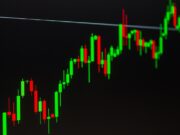Are some dividend stocks more dedicated to their shareholders than others?
You could make the case for “Dividend Kings,” regarded as an elite community of dividend-payers that have shown consecutive annual dividend increases for 50 or more years. They have:
– Adapted to evolving consumer preferences and tech advancements,
– Weathered severe economic challenges like inflation and market crashes,
– Shown consistent, impressive business performance each fiscal year.
I found three Dividend Kings in particular that are each currently down year-to-date, which leaves plenty of room to grow. Growth leads to price appreciation, which leads to shareholder profits.
Now, let’s break down what makes these crowned dividend stocks so great. Check it out:
H.B. Fuller Company (FUL)
From the industry/processing sector, first on the list is a specialist in adhesives, H.B. Fuller Co. (FUL), which have been used for over two thousand years, indicating a constant need. These versatile products are utilized by FUL in a number of markets and are continuously improving. FUL’s command of the adhesives market, coupled with low capital intensity, generates consistent cash flow. FUL has implemented annual dividend increases for 52 years.
FUL is currently down YTD (year-to-date) by 8.39%, trading near the bottom of its 52-week range. With $3.7 billion—more than its market cap of $3.5 billion—in TTM revenue at $2.96 per share, FUL shows net income of $163.9 million through its 4.43% profit margin. FUL has a PEG (price/earnings/growth) ratio of 0.9x, forecasted quarterly growth in revenue (+19.98%) and EPS (+89.82%), and, for the current quarter, is expected to show over $970 million in sales at $1.24 per share. FUL’s current dividend yield is 1.25%, and it comes with a quarterly payout of $0.20 ($0.80/year) per share. With a 10-day average volume of just over 255 thousand shares, FUL’s median price target is $80, with a high end of $106 and a low end of $66, suggesting a possible 61% jump from its current price. FUL has 2 buy ratings and 2 hold ratings.
[stock_market_widget type=”accordion” template=”extended” color=”#5679FF” assets=”FUL” start_expanded=”true” display_currency_symbol=”true” api=”yf”]
Nordson Corp (NDSN)
Nordson Corp. (NDSN) has built a strong customer base over the years. Many of NDSN’s solutions are installed at customer facilities, creating loyalty. With a significant portion of recurring revenue from parts and consumables, NDSN enjoys a steady cash flow that is resistant to economic downturns—a true model of stability. NDSN offers a compelling growth profile among its crowned peers and, so far, has seen 59 years of consecutive dividend increases.
Down only slightly year-to-date by 1.72%, NDSN actually works well as a value stock, although it’s near the middle of its existing price range. With a safe-from-voltility beta score of 0.93, NDSN shows $2.6 billion in TTM revenue at $8.91 per share, from which it profited $514.8 million via its 19.75% net margin. At its last earnings call, NDSN beat analysts’ EPS forecasts by a margin of 6.78%, reporting $2.26 per share vs. the $2.12 predicted. NDSN also shows year-over-year growth in key areas: revenue (+2.32%), net income (+16.35%), EPS (+17.35%), and net profit margin (+13.74%). NDSN has an annual dividend yield of 1.12% and a quarterly payout of 65 cents ($2.60/year) per share. With an ROE (return on equity)
of 21.97% and a 10-day average volume of approximately 240 thousand shares, NDSN has a median price target of $257, with a high of $270 and a low of $225; this represents a possible 15% increase from where its price currently sits. NDSN has 5 buy ratings and 3 hold ratings.
[stock_market_widget type=”accordion” template=”extended” color=”#5679FF” assets=”NDSN” start_expanded=”true” display_currency_symbol=”true” api=”yf”]
Federal Realty Investment Trust (FRT)
The only real estate investment trust (REIT) in the exclusive Dividend Kings club is Federal Realty Investment Trust (FRT), with 55 consecutive years of dividend increases. With a tight focus on high-end, mixed-use properties in affluent areas across nine markets, including Southern California, Silicon Valley, Phoenix, Miami, Chicago, Philadelphia, Boston, New York, and Washington, D.C., FRT has enjoyed notable stability throughout and beyond the pandemic. FRT’s properties have always maintained high occupancy rates, solidifying its reputation as one of the oldest publicly traded REITs. Shareholders have little reason to worry about any changes to FRT’s reliable dividend stream.
FRT’s stock is down by 5.86% year-to-date, is near its existing 52-week low, and enjoys a safe 0.95 beta figure. FRT shows TTM revenue of $1.09 billion at $4.67 per share, and during the same period it made $379.46 million in net income on the back of its solid 35.47% profit margin. With an ROE of 13.93% and a 3x PEG ratio, FRT most recently surpassed analysts’ EPS forecasts by 7.6%, reporting $0.65 per share vs. the $0.60 per share expected. FRT currently has an annual dividend yield of 4.53% and a quarterly payout of $1.08 ($4.32/year) per share, using a generous 91.12% payout ratio. With a 10-day average volume of roughly 529 million shares, FRT’s median price target is $109, with a high of $125 and a low of $91, allowing for a potential 31.5% jump from its current price. FRT has 9 buy ratings and 9 hold ratings.
[stock_market_widget type=”accordion” template=”extended” color=”#5679FF” assets=”FRT” start_expanded=”true” display_currency_symbol=”true” api=”yf”]







